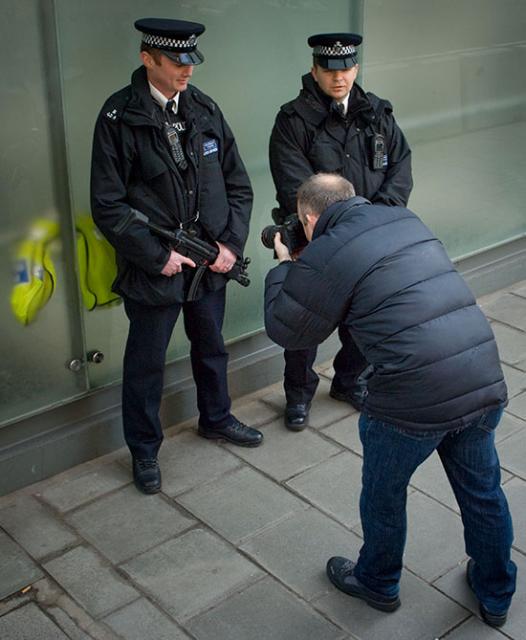‘Official’ meetings on the Road to Copenhagen:
31 March to 8 April 2009
First Post-Kyoto Climate Negotiations (UNFCCC Intercessional Meeting), Bonn, Germany
The first meeting on the “road to Copenhagen” and first international climate meeting for the Obama administration. Expected Outcome: Broad discussions on respective mitigation goals for developed and developing countries. However, it is unclear whether President Obama will have a climate negotiator and under secretary in place at this time so there will real “negotiating” at this meeting. http://unfccc.int/meetings/items/2654.php
2 April 2009
G20 Meeting, London, England
This will likely be President Obama’s first large-scale meeting with other world leaders. The agenda will likely look to tackle the financial crisis, but the G20 website mentions the need to “make progress on long-term issues such as climate change and international development.” Expected Outcome: Develop a commitment that the global economic recovery will factor in carbon emissions. http://www.g20.org/
24-26 May 2009
World Business Summit on Climate Change, Copenhagen, Denmark
The Copenhagen Climate Council is organizing the World Business Summit on Climate Change, which will bring together the business community, top scientists, economists and other leading thinkers. Expected Outcome: Issue recommendations for the next international global warming agreement. http://www.copenhagenclimatecouncil.com/
1-12 June 2009
Second Post-Kyoto Climate Negotiations (UNFCCC Intercessional Meeting), Bonn, Germany
Draft negotiating text is expected to be issued before or during this meeting and will likely be very general with all the contentious items placed in brackets, but it will be the basis for actual negotiations. Expected Outcome: Draft negotiating text. http://unfccc.int/meetings/items/2654.php
8-10 July 2009
G8 Summit, La Maddalena, Italy
The host, Italian Prime Minister Silvio Berlusconi, does not share the commitment to addressing climate change of previous G8 hosts. Addressing climate at this meeting will be critical for keeping momentum toward Copenhagen. Expected Outcome: G8 Agreement setting the stage for Copenhagen
http://www.g8italia2009.it/G8/G8-G8_Layout_locale-1199882116809_Home.htm
31 August – 4 September 2009
World Climate Conference Three, Geneva, Switzerland
The World Climate Conferences (WCC) is the major “scientific” meeting for 2009 and is the third in a series of international meetings, organized by the World Meteorological Organization
about global climate issues. The second WCC in 1979 resulted in the creation of the U.N.’s Intergovernmental Panel on Climate Change. http://www.wmo.int/pages/world_climate_conference/index_en.html Expected Outcome: Group will address climate prediction, disaster risk reduction and adaptation to climate change.
August 2009 (date not set)
Third Post-Kyoto Climate Negotiations (UNFCCC Intercessional Meeting), Bangkok, Thailand
This is the third meeting on the “road to Copenhagen” and, by this point, parities should have set their negotiating positions so the framework for the next international treaty can start to be crafted. Expected Outcome: Nation’s set negotiating positions. http://unfccc.int/meetings/items/2654.php
21-25 September 2009
United Nations General Assembly Climate Summit, Copenhagen
New York, New York – *UN Secretary General Bon Ki Moon has indicated that he plans to hold a special session with heads of state to address climate change. Expected Outcome: Indications of nation’s negotiating position for
October 2009 (date not set)
Fourth Post-Kyoto Climate Negotiations (UNFCCC Intercessional Meeting/Minister’s Meeting), Location to be determined
Expected Outcome: Final draft text agreed to. This is the final negotiating session before Copenhagen and may be attended only by environment ministers making it a closed door meeting designed to set the stage for COP 15.
7-18 December 2009
UNFCCC Conference of the Parties 15, Copenhagen, Denmark
If there is to be no gap between the Kyoto Protocol and a new agreement, a framework must be agreed to at this meeting. Expected Outcome: New international global warming treaty. http://www.cop15.dk/en
2010 (dates unconfirmed)
UNFCCC Conference of the Parties 16, Jamaica
=============
Old dates from this calendar:
Compiled at the recent EF! Winter Moot (scroll down for your summer of fun – dates up until December ’09):
21-22 February 2009
No Borders UK gathering, Bristol
26 February 2009
Demonstrations at UK Coal Awards (www.climaterush.co.uk) & at UK Coal HQ (www.northernclimaterush.wordpress.com)
5 March 2009
Next Climate Rush, London
> http://earthfirst.org.uk/actionreports/node/22254
13-15 March 2009
EF! Treeplanting, Hebden Bridge
(trees@riseup.net > www.earthfirst.org.uk/actionreports/node/22158)
13-15 March 2009
COP15 International Mobilisation Network meeting, Copenhagen, Denmark (www.climateaction09.org)
14-15 March
National squat meetup, Bristol
(www.squatmeet09.wordpress.com)
21-22 March 2009
Climate Camp Carbon Trading Education Weekend, London
(international@climatecamp.org.uk)
21-22 March 2009
Direct Action training, 10am at Cowley Club, Brighton
(www.cowleyclub.org.uk)
1 April 2009 Fossil/Financial Fools Day
G20 Protests + Events List + Locations Map
Squaring up to the Square Mile: the London G20 map
Climate Camp in the City, London (www.climatecamp.org.uk/g20)
G20 Meltdown at the Bank of England (www.g20meltdown.org)
Fossil Fools’ Day, everywhere (www.risingtide.org.uk/fossilfoolsday2009)
Times & resource links > http://earthfirst.org.uk/actionreports/node/22258
* G20 Critical Mass
9:00 AM Meet at Bank Junction (Bank tube station) EC2
* Financial Fools Day Street Party
Assemble at Cannon Street, Moorgate, Liverpool Street or London Bridge stations 11am to form four marching blocks heading towards the Bank of England for 12-noon, in the ‘Square Mile’ of the City of London.
See: http://www.g-20meltdown.org/
Bring a portable radio!
* Climate Camp in the City
The climate camp are camping in the European Carbon Exchange, Hasilwood house, City of London 12-noon.
See: http://www.climatecamp.org.uk/g20
Final update on what to bring and what to do where at http://earthfirst.org.uk/actionreports/node/22291
* Fossil Fools Day: ‘Your Party’s Over!’ *** POSTPONED by BP following police advice. ***
Climate Criminal BP is celebrating its centenary with cocktails and canapes at the British Musem. And we will be there too, between 6-7pm, to say ‘Your party’s over!’
Meet at 6pm at the British Museum’s Gt. Russell St. gate
See: http://www.fossilfoolsdayofaction.org
Bring banners, musical instruments, a sense of climate justice and a nonsense of foolery.
2 April 2009
* Crash the Stock Exchange
Eat capitalism for breakfast. Disrupt the traders whose financial egomania perpetuates global injustice: let’s shutdown trading for the day.
Meet outside the London Stock Exchange, 10 Paternoster Square, City of London, London EC4M. 7am (traders arrive at 7am, trading commencing 8am). Nearest tube: St Pauls – have a pleasant journey in… tubes might be busy.
* Excel Centre
Direct action all day against the Excel Centre, Canning Town where the G20 will be meeting
ExCeL London, One Western Gateway, Royal Victoria Dock, London, E16 1XL
A coalition of groups including: The Palestine Solidarity Campaign, Stop the War Coalition, The British Muslim Initiative, and CND have called two protests at the G20; a march and rally in central London on the afternoon of April 1st, and a protest to the conference itself on April 2nd.
3-5 April 2009
Demonstrations at NATO 60TH Anniversary Summit, Baden-Baden, Germany & Strasbourg, France
http://dissent.fr/taxonomy/term/165
24 April-5 May 2009
Coal Caravan, cycling from Nottingham, through Derbyshire, Yorkshire & .
Stopping off at a variety of open-cast sites, power stations and other beautiful places! Full details of how to book, itinerary for where to join.
(caravan@climatecamp.org.uk > www.coalcaravan.org.uk)
25/26th April 2009
Sizewell anti-nuclear Camp and Demo
2-3rd May 2009
Anti-militarist conference, Brighton
(http://antimilitaristnetwork.noflag.org.uk)
4th May 2009
Smash EDO Mayday! Mayday! Street party against war and greed, Brighton.
(http://www.smashedo.org.uk)
6 May 2009
A Wake for BP at the oil behemoth’s centenary party
29 May-1 June
Rossport Solidarity Camp summer gathering
1 June
Climate Rush Pedal Power
http://earthfirst.org.uk/actionreports/node/22611
6 June 2009
Eco-village occupation, SW London
http://earthfirst.org.uk/actionreports/node/22593
6-7 June 2009
National Anarchist Gathering, London
www.conference09.org.uk
11-14 June 2009
Scottish Climate Camp Convergence
(http://climatecampscotland.org.uk)
23th-29th June 2009
Calais No Borders Camp
(http://calaisnoborder.eu.org/)
3-5 July
Forest Circus festival, Lappersfort, Belgium
8-10 July 2009
Demonstrations at G8 Summit, La Maddalena, Italy
11-12 July 2009
Anti-Militarist Network Gathering, Nottingham
(http://www.antimilitaristnetwork.org.uk)
11-19 July 2009
Danish Climate Camp, near Copenhagen
(http://camp09.dk/)
12-19 July 2009
Das Klima Workshop Festival/Le camp climatique, near Berne, Switzerland
(http://www.netzwerkzeug.org/)
18th-? July
Saving Iceland Summer Mobilisation 2009
(www.savingiceland.org)
20–26 July 2009
NO to Uranium Power – Antinuclear Climate Camp, Tervola, Finland
(http://www.hyokyaalto.org/category/english)
23rd-27th July 2009, Oxfordshire.
You are invited to Peace News’ first ever summer camp.
(http://www.peacenewscamp.info)
3-9 August 2009
French Camp Action Climat, Notre Dame des Landes, Nantes
(www.campclimat.org)
3-9 August 2009
Dutch/Belgian Climate Camp
(www.klimaatactiekamp.org)
3-10 August 2009
Scottish Camp for Climate Action
(http://climatecampscotland.org.uk)
13-16 August 2009
Climate Camp Cymru, Near Merthyr Tydfil, South Wales
(http://climatecampcymru.org)
15-23 August 2009
Irish Climate Camp
(http://www.climatecamp.ie)
18-24 August 2009
Earth First! Summer Gathering, Cumbria
(www.earthfirstgathering.org.uk)
20-23 August 2009 IN SALENTO, NUCLEAR CLIMATE CAMP, Italy – Lecce
More info
21-23 August 2009
Beyond Borders weekend, Nottingham
A weekend of skillsharing and discussion about fighting border controls and showing solidarity with migrants
(http://beyondbordersweekend.wordpress.com)
27 August-2 September 2009
UK Camp for Climate Action – convergence within the M25/London (www.climatecamp.org.uk)
September 2009 (dates unconfirmed)
Climate Camp, South Australia
(http://climatecampsa.org)
North American action camps summer 2009
international list of Convergences for Climate Action
12-20 September 2009
Bristol Co-Mutiny
18-19 September 2009
squats and autonomous spaces – 2 days of direct action around housing and the creation of more autonomous spaces at this time of crisis. See link
10-11 October
Workers’ Climate Action conference, London
12-16 October 2009
Global Mobilisation in Defence of Mother Earth and the Peoples
called by the 4th Continental Summit of Indigenous Peoples Abya Yala (”America”)
More info/resources
16-18 October 2009
COP15 International Mobilisation Network meeting
(www.climateaction09.org)
17-18 October 2009
The Great Climate Swoop, closing down Ratcliffe-on-Soar coal-fired power station
More info
24 October 2009
London Anarchist Bookfair
(http://www.anarchistbookfair.org)
24 October 2009
International Day of Climate Action
http://www.350.org/
31 October-1 November
http://earthfirst.org.uk/actionreports/node/23245
31 Oct-1 Nov 2009
Gathering Against the Prison Society, Brighton
Discussions & presentations about the struggle for liberation, inside and outside of the prison walls
More info
21-22 November 2009
No New Nuclear. Planning to win strategising weekend, London
28 November-1 December 2009
Weekend of Action and Workshops at Mainshill Solidarity Camp
5 December 2009
COP15 OUT, a secret plan to take a space in the City of London away from and after the Wave. It’s time to show our ‘leaders’ how we’re going to take action to reduce emissions ourselves.
3-9 December 2009
Social and Climate Justice Caravan from the WTO Ministerial in Geneva to the COP15 summit in Copenhagen.
http://www.climatecaravan.org
7-18 December 2009
Demonstrations at COP15 Summit, Copenhagen, Denmark
(www.climateaction09.org)
See this article for background & links to Action Guide & Map
7-18 December 2009
Klimaforum: People’s Climate Summit
http://www.klimaforum09.org
11 December 2009
* Our Climate! Not Your Business! (organised direct action to stop Corporations taking part in COP process)
http://notyourbusiness.hacklab.dk/
12 December 2009
* Flood for Climate Justice (demonstration by FoE)
http://www.foei.org/en/what-we-do/un-climate-talks/global/2009/the-flood-is-coming
* Global day of Action
http://www.globalclimatecampaign.org/
* March for Climate Justice (including system change, not climate change bloc)
* Don’t Nuke the Climate! International Day of Action
http://www.dont-nuke-the-climate.org/index.php?lang=en
13 December 2009
Hit the Production of Climate Chaos
http://htp.noblogs.org/
* Farmers action (Via Campesina against agro-industry)
14 December 2009
* No Borders, No Climate Refugees! (Day of action in Copenhagen. Call to action to international no borders groups during the COP 15 in Copenhagen)
http://info.interactivist.net/node/13135
* Reparations for Climate Debt
15 December 2009
* Resistance is Ripe! Agriculture Action Day (Change the food system not the climate)
http://www.climate-justice-action.org/mobilization/agriculture-action-day/
16 December 2009
* RECLAIM POWER! – Pushing for Climate Justice! (Mass action to enter the COP15 conference area and disrupt the sessions in order to hold a People’s Summit for Climate Justice. Confrontational civil disobedience)
http://www.climate-justice-action.org
18 December 2009
* (last official day of the summit) – “Never Trust a COP” actions throughout the city
http://www.nevertrustacop.org/
 FFD is only five weeks away! We know of various affinity group actions around the UK but thought we’d upload some inspirational public actions you can get involved with on the April 1st and some resources to help inspire you to take action in you local area.
FFD is only five weeks away! We know of various affinity group actions around the UK but thought we’d upload some inspirational public actions you can get involved with on the April 1st and some resources to help inspire you to take action in you local area.
 Reposted: 16.02.2009: everyone knows Indymedia’s a copper’s favourite read, but after a couple of hundred snappers turned up outside the yard this morning they’ll be queuing up today to see whose mug’s on the wire.
Reposted: 16.02.2009: everyone knows Indymedia’s a copper’s favourite read, but after a couple of hundred snappers turned up outside the yard this morning they’ll be queuing up today to see whose mug’s on the wire.  illegal eviction of squat in Bath
illegal eviction of squat in Bath The annual and occasionally hedonistic opportunity to plant thousands of native trees on a ecologically degraded hillside is happening in March. Organised by Earth First! activists in collaboration with Calderdale community group Treesponsibility we will be based in Hebden Bridge in Calderdale. If you fancy a weekend of hard but satisfying work planting native woodland combined with good food and socialising put the weekend of the 13-15th March in your diary.
The annual and occasionally hedonistic opportunity to plant thousands of native trees on a ecologically degraded hillside is happening in March. Organised by Earth First! activists in collaboration with Calderdale community group Treesponsibility we will be based in Hebden Bridge in Calderdale. If you fancy a weekend of hard but satisfying work planting native woodland combined with good food and socialising put the weekend of the 13-15th March in your diary.